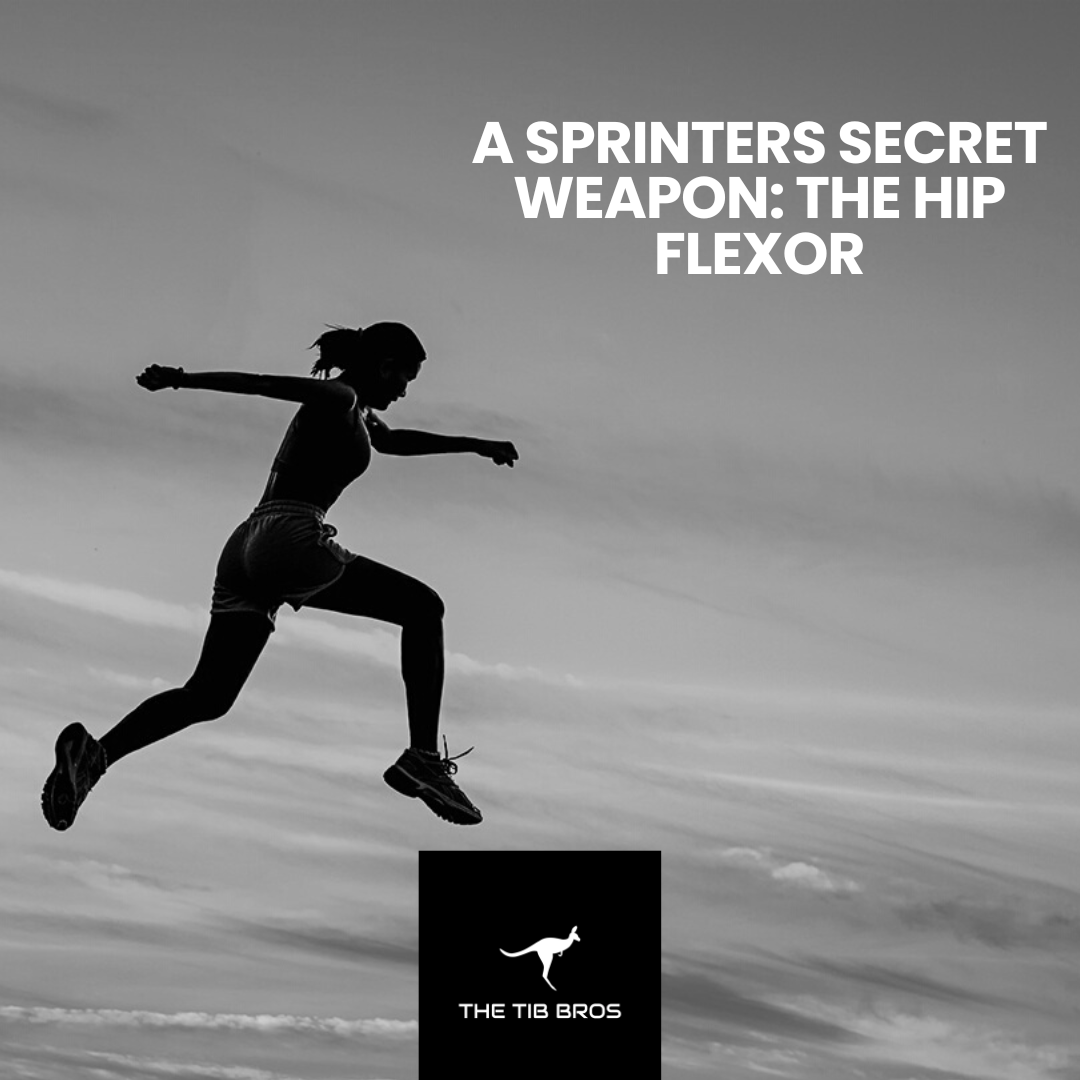Sprinters train their whole lives to shave fractions of a second from their times. One often overlooked aspect that can dramatically impact sprinters’ performance is the strength of the hip flexor.

In this article I discuss 4 key reasons as to why the hip flexor can increase speed for sprinters backed by scientific research. Then we delve into how we can specifically strengthen this muscle group. Overall the research suggests a strong correlation between strong hip flexors and running speed. From one particular study by Deane, R.; Chow, J.; Tillman, M.; Fournier, K. (2005) found that in using a hip flexor resistance training programme; over an 8 week period on average improved their hip flexion strength by 12.2% and decreased their 40 yard dash by 3.8 % and shuttle runs by 9%.
- Enhanced Stride Length
A key factor in sprinting speed is the length of stride (the distance covered with each step). Strong hip flexors allow sprinters to achieve a more extended stride, covering more ground with each powerful step. The hip flexors (a group of muscles - see image above) lift the thigh toward the abdomen, contributing to leg extension during the swing phase of running. Research published in the Journal of Applied Biomechanics (2011) highlights the direct correlation between hip flexor strength and stride length in sprinters. A study conducted by Beardsley and Contreras (2014) found that participants with stronger hip flexors exhibited longer strides and faster sprint times.
- Explosive Power
Sprinting requires a lot of explosive power to accelerate quickly. The hip flexors, particularly the iliopsoas muscle (See diagram above), are critical for generating explosive force during the initial stages of a sprint. A study published in the Journal of Strength and Conditioning Research (2015) examined the relationship between hip flexor strength and sprint performance in collegiate sprinters. The results indicated that sprinters with stronger hip flexors demonstrated superior acceleration abilities and faster 20-meter sprint times.
- Efficient Knee Lift
During sprinting, knee lift is vital for minimizing ground contact time and achieving a swift stride turnover. The hip flexors play a vital role in lifting the knee efficiently, which enables sprinters to transition smoothly between each step. A study published in the International Journal of Sports Physical Therapy (2019) explored the impact of hip flexor flexibility and strength on knee lift mechanics. The findings suggest that stronger hip flexors contribute to higher knee lift angles, facilitating quicker and more efficient leg turnover during sprinting.
- Injury Prevention
Sprinters are susceptible to various injuries, including strains, tears, and imbalances due to the mass forces put on the body during sprinting. Strengthening the hip flexors can play a preventative role by maintaining muscle balance around the hip joint. Weak hip flexors can lead to muscle imbalances, causing undue stress on other muscle groups, such as the hamstrings and lower back. A study in the Journal of Sports Medicine and Physical Fitness (2013) emphasizes the significance of hip flexor strength in reducing the risk of common sprinting-related injuries. Another study in the Journal of Sports Science & Medicine (2016) emphasizes the importance of hip flexor strength in stabilizing the pelvis and improving running mechanics.
How do we strengthen the hip flexor?
We can use a number of tools but a great portable option is that of a reverse squat strap. By strengthening the hip flexor by bringing your knees towards your abdomen.
See the video on how to perform.
Conclusion
Strong hip flexors are a hidden gem in the arsenal of a successful sprinter. Integrating targeted hip flexor exercises into sprinters' training routines can yield significant performance gains and contribute to a competitive edge.
Aspiring sprinters and coaches alike should recognize the critical role that hip flexors play in sprinting mechanics and performance. The evidence from scientific studies highlights the direct correlation between hip flexor strength and various aspects of sprinting. From enhanced acceleration to injury prevention, the advantages of strong hip flexors extend beyond the track, impacting an athlete's overall sprinting prowess.
References:
Deane, R.; Chow, J.; Tillman, M.; Fournier, K. (2005). Effects of Hip Flexor training on sprint, shuttle run, and vertical jump performance. Journal of Strength and Conditioning Research 19(3):p 615-621.
Beardsley, C., & Contreras, B. (2014). The role of the hips in sprinting. Strength and Conditioning Journal, 36(6), 30-36.
Butler, R. J., Crowell, H. P., & Davis, I. M. (2003). Lower extremity stiffness: implications for performance and injury. Clinical Biomechanics, 18(6), 511-517.
Clark, R. A., Bryant, A. L., & Pua, Y. H. (2016). Validity and reliability of the maximal step length test in older people with knee osteoarthritis. Journal of Sports Science & Medicine, 15(3), 477.
Miller, R. H., Umberger, B. R., Hamill, J., & Caldwell, G. E. (2012). Evaluating the importance of muscle‐tendon interaction contributions to musculoskeletal stiffness during running. Journal of Experimental Biology, 215(7), 1333-1343.
Morin, J. B., Gimenez, P., Edouard, P., & Arnal, P. (2012). Mechanical determinants of 100-m sprint running performance. European Journal of Applied Physiology, 112(11), 3921-3930.
Riemann, B. L., & Lephart, S. M. (2002). The sensorimotor system, part II: The role of proprioception in motor control and functional joint stability. Journal of Athletic Training, 37(1), 80-84.

Share:
The Secret to Injury Free Long Distance Running: The Power of a Strong Tibialis Anterior Muscle.
Basic Equipment Required In Your Home Gym To Get ATG Strong